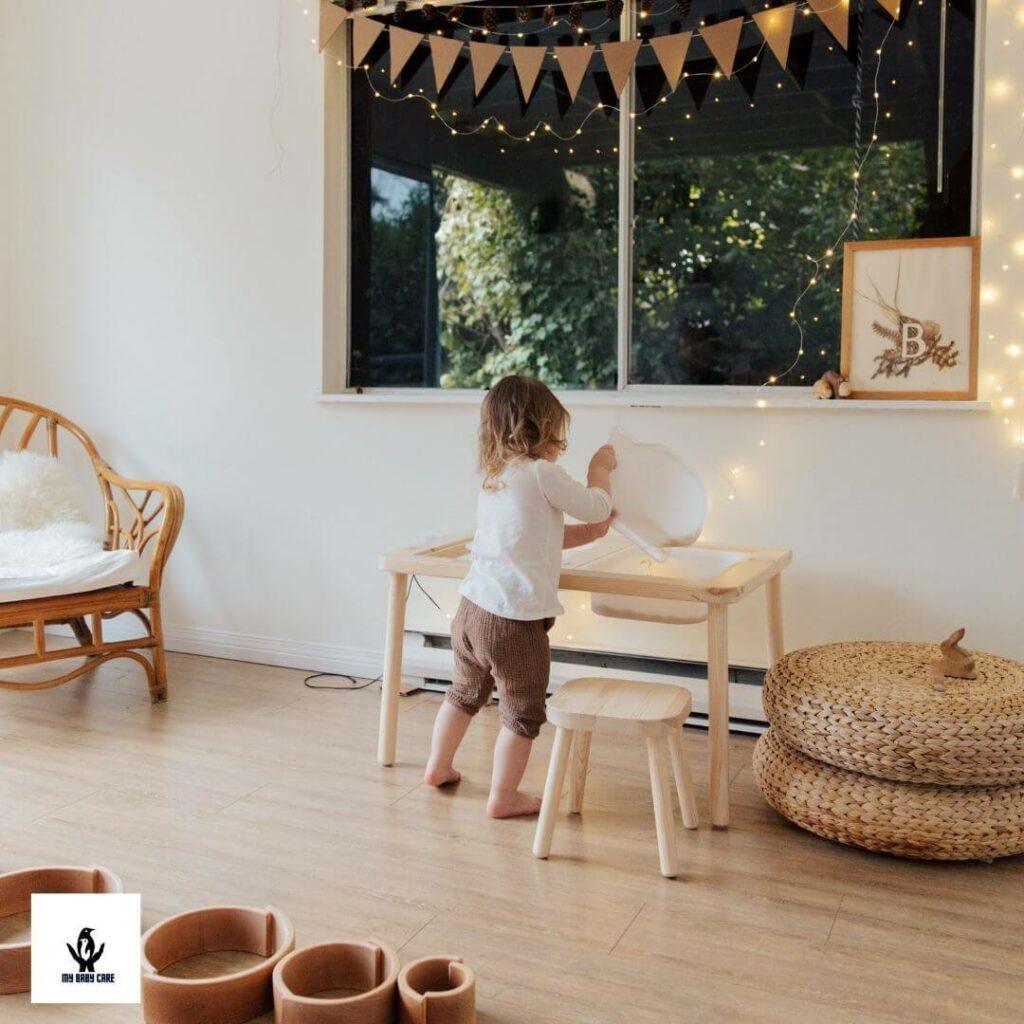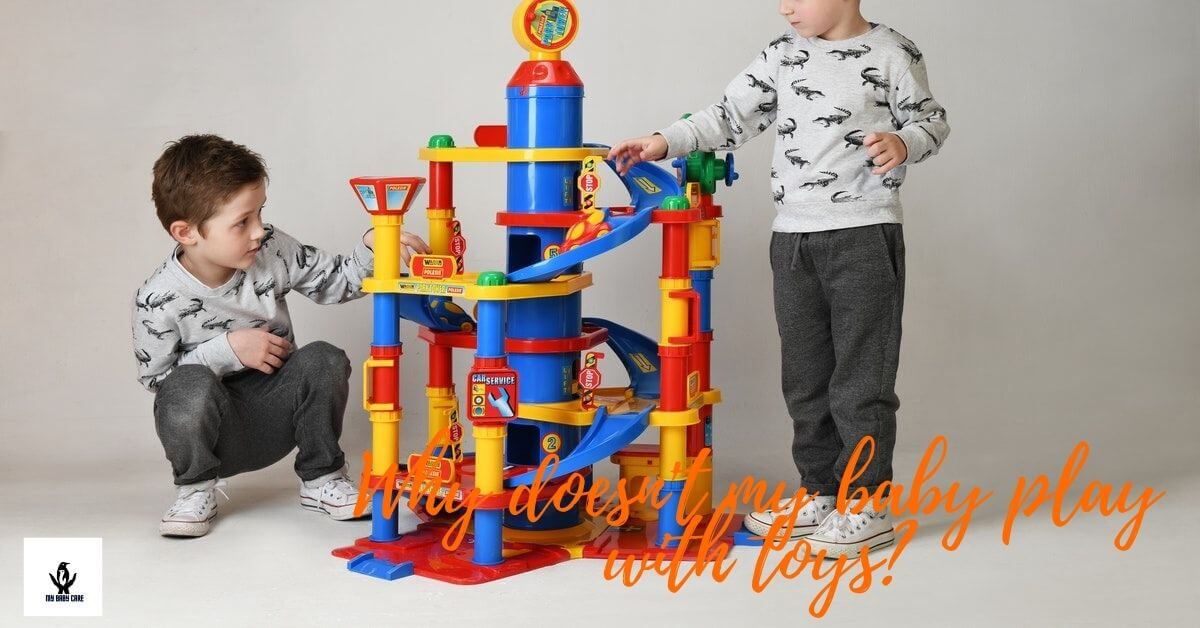Most present-day moms say that my home is full of Christmas toys this time. But why doesn’t my toddler play with toys?
They constantly ask. Stick to this daily insight. Point number six of my article will shock you.
Most of the kids don’t know how to play with new toys in their room. The main reason is the average toddler doesn’t have proper play skills which goes similar to their developmental milestone.
Modern homes, schools, and other environments are full of audio-visual distractions for children in current days.
So kids have fewer opportunities to grow interpersonal skills to enhance individual and group play skills.
Kids don’t know how to play? Because they don’t develop play skills which should include their social and interpersonal skill set.
Also, current home,school and daycare setup won’t allow kids to get more play experiences. They are full of audio-visual obstructions.
Table of Contents
1. Did you find developmentally appropriate toys for your baby?
Most of the time your babies are easily frustrated with toys due to a few reasons. If you offer too many toys to your baby, then they don’t have an opportunity to think constructively with a variety of play ideas.
So they don’t build a growth mindset. They are not going to solve problems while playing. Because the availability of the toys will not make them think.
So you need to produce age-appropriate toys for your baby. Don’t distract their visual fields and the working tables or the mats by putting too many toys.
It will help them to solve the few problems they face while they are playing.
Start with simple toys. It enhances their ability to make choices. Instead, providing bit-advanced toys may be a problem for your baby.
They can’t play independently. They start to seek attention and assistance to play engagement.
You need to facilitate your child to initiate the play. Simple toys may help with this. Initiation of play independently will create so many skills among children.
Never push your kid to play and that frustration may lead to the future and it affects them negatively.
So the age factor is very important in selecting appropriate toys for your kids. Because it is the main point where the child enjoys playing with a specific toy.
You can always consider the manufacturer’s suggested age range when selecting a toy.
2. Were you able to provide a clear space to play with toys?
It is a very hard thing for most parents to keep a surface “clear” even in a short time period.
But if you can minimize the visual distraction while the child is playing.
It allows the child to think, organize, re-arrange, and explore the playing area. Critical thinking and imagination are very important life skills to develop with your child.
But never try to clear a huge space for your baby to play. You can empty some floor space with the free region to move here and there.
When you are clearing play spaces, you need to facilitate open-ended play in that room.
Too many toys provide too much sensory stimulation to children. It leads to overwhelming your child. I suggest rotating a few toys at a time.
You can select a set of toys that your baby adores and try to provide them periodically with time.
3. Does your baby use the toy as a form of entertainment?
Do you know the difference between a toy and a tool? I suggest a toy should do the dual function of the form of entertainment and the building process.
You need to identify the primary function of a particular toy. Then you can get maximum benefits such as creativity, critical thinking, problem solving and teamwork, etc.
As smart parents, you should not accept only the amusement from a given toy. You can add value to the leisure time of your baby by giving them a toy.
If you can create an idea dreamer by operating a toy, then you can confirm that the child is enjoying the toy.
But never underestimate the power of entertaining toys. They lay the foundation of engagement of the baby for the extra activity in daily life. Later you can add value to the activities of your kid.
So If you need to convert entertaining toys into productive tools don’t expect quick results.
Get ready for the period of resistance. Your kid may pass a boring time period.
The child gradually finishes the uncomfortable time for you and yourself. The engagement starts at a slow speed.
With your massive encouragement, your child gets to start a valuable engagement with the toys.
4. Are your kids dependent on others to play for them?
Almost all toddlers are good imitators. They always do what the elders do around them. These toddlers don’t know how to play unless you show them how to play.
Another reason is that your toddler may not be seen how other kids are playing. This lack of experience may lead to withdrawal from playtime.
The best option is to let them decide what they want to play with. Your responsibility is to create opportunities for them to stay both with educational and enjoyable toys at the same time.

5. Availability of too many toys kills your kid’s interest to play?
Did you hear the term “audio-visual distraction”? In current days there are many audio-visual distractions. Most kids don’t prefer busy environments.
If they like those settings, they may have a certain illness or behavioral issue.
The “self-talk” ability of your kids may be sidelined by these distractions.
Neurological child conditions always relate to these problems. Mostly autistic kids really enjoy busy environments sometimes they ran away from those places.
That is depended on their specific sensory needs and behavioral patterns.
6. Other simple tips to grow your kid’s interest to play?
Normally your 15-month-old toddler spends about 5 seconds on any toy. That is normal nature. So it is difficult to enhance the engagement period of your kid.
The preferences of individual kids are different. Dear parents, you need to think of a variety of activity patterns.
- A container full of balls and toys can be carried around the play space. You can load and unload the toys and the balls into the play mat and see whether it takes your child’s interest or not.
- Practice a simple game with a toy dump truck
- Use various plastic containers and lids to put things inside and close the lids.
- Rolling a gym ball ( A big ball ) back and forth with an adult.
- Connecting blocks but not for very long
- Push toys
- Monster chase game
- Digging and sweeping
- chewing on peg balls
- Putting things in holes
- IKEA play tunnel
- Waring grown-up shoes
- climbing the furniture with supervision
- Cleaning metal cups together
7. Normal play activities and the television
A common phenomenon in American households – having the TV in the child’s background. Here they are eventually exposed to television passively.
Most children below eight years are exposing minimally 4 hours a day to the television in an average day.
Researchers found that it lowers the child’s language and creative abilities a lot.
Average toddler spends very shorter play episodes with a given toy when a TV is placed in the background. Without TV the toddlers are trying to hope one toy into another and try to increase active playtime.
8. Final thoughts
Most of the kids don’t play with the given toys. They are not been properly taught and demonstrated active play. So they are unable to use their main learning model which is “imitating.”
Also, audio-visual distractions are another main course for this. A lot of research proved that these disturbed environments are shortened the engagement span of kids.
Also, some parents give inappropriate toy types which are incompatible with their kid’s age limits.
So kids are unable to use the toy as an enjoyable item or as a learning tool. They are idling with the gadget.
Providing too many toys may spoil the individual choices of your kids. It is also giving over-sensory stimulation to your kid.
Selecting a dedicated area is another important thing in teaching how to play. Because the child needs to get an idea about the boundaries of the play area. So they can judge the play pattern relevant to themselves.

